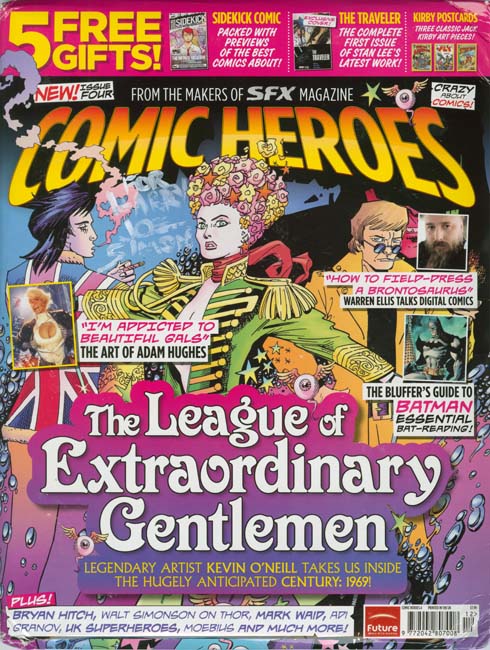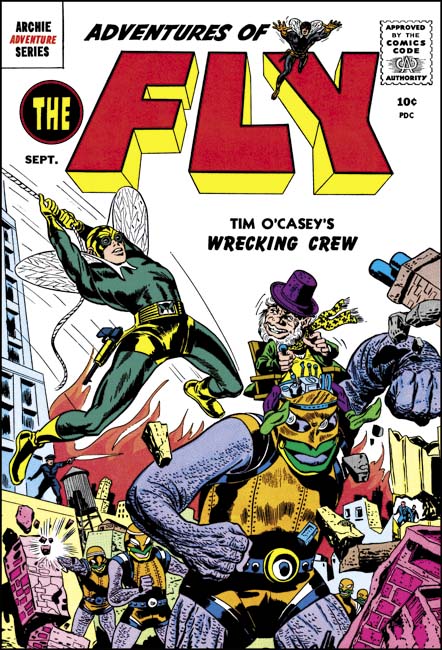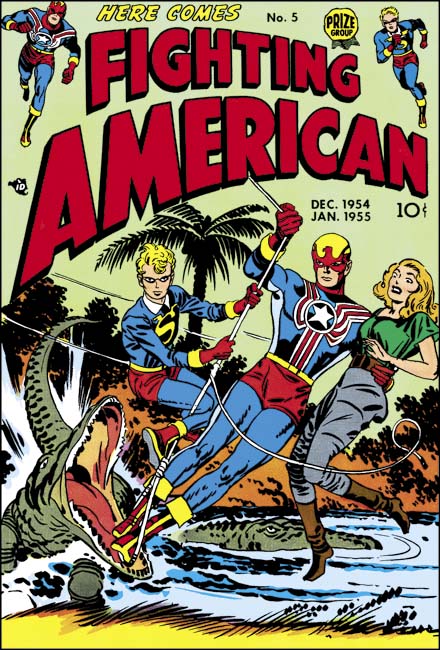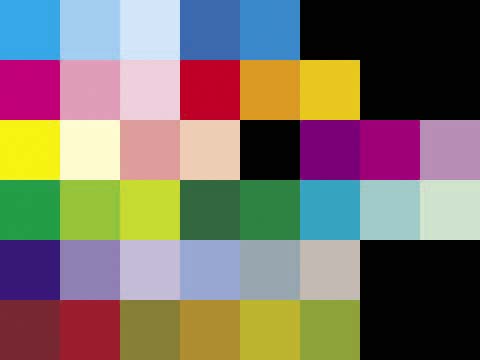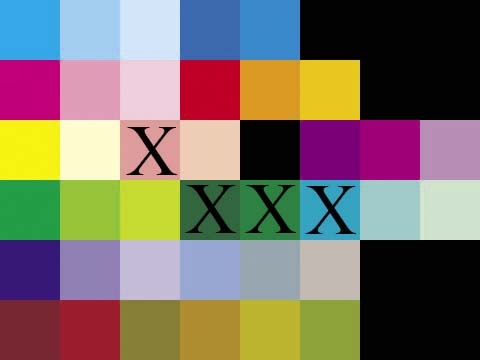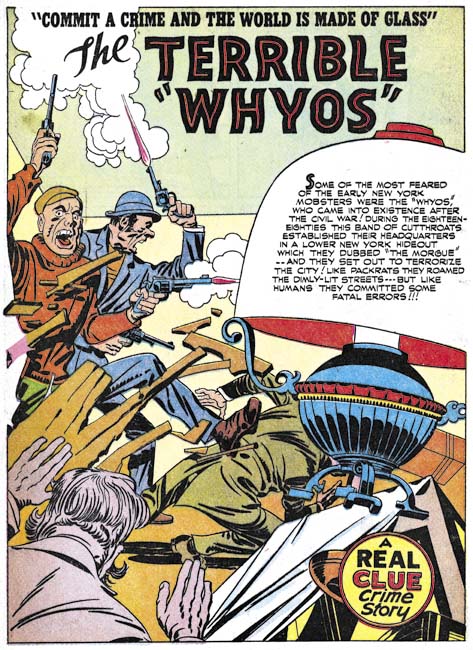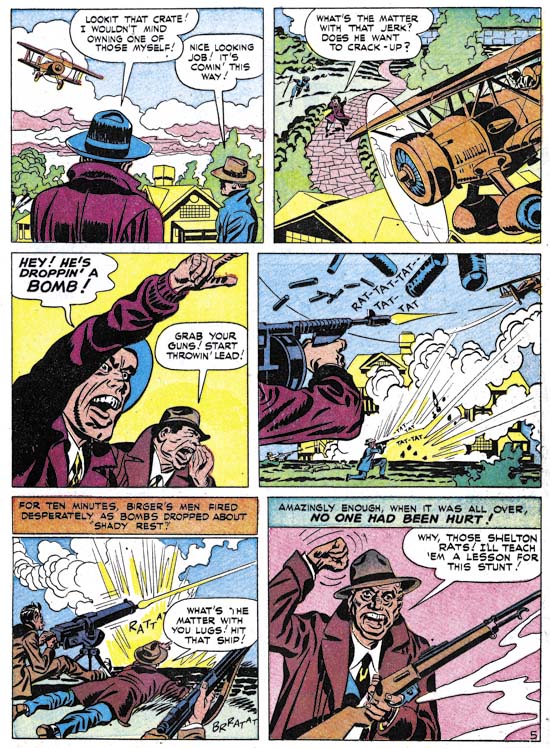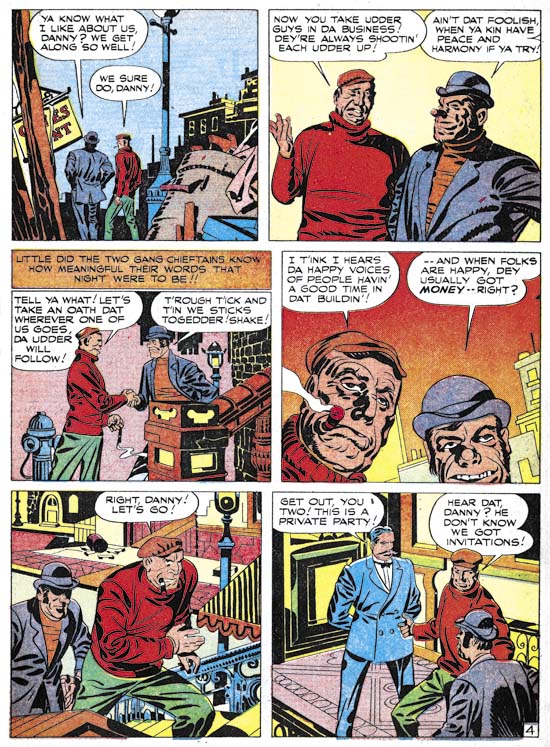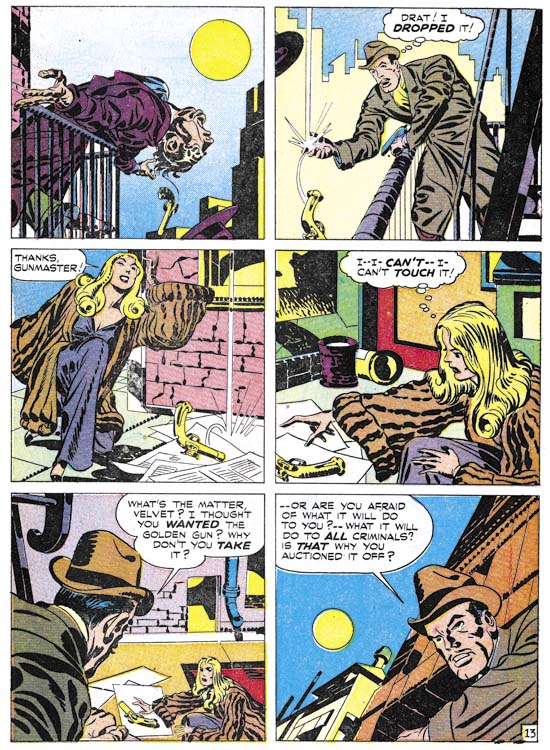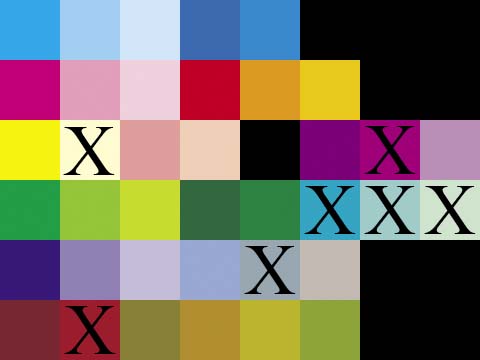
Color Palette used by Prize for Headline (March to September 1947)
C, C50, C25, CM50, CM25, X, X, X
M, M50, M25, MY, YM50, YM25, X, X
Y, Y25, M50Y25, M25Y25, X, MC50, MC25, M50C25
CY, YC50, YC25, CYM50, CYM25, CY25, C50Y25, C25Y25
CM, C50M50, C25M25, C50M25, C50M25Y25, C25M25Y25, X, X
MYC50, MYC25, YC50M50, YM50C25, YC25M25, YC50M25, X, X
In the previous chapter I discussed the coloring used by Hillman in Clue Comics and Real Clue Crime Stories. Now I will write about the coloring used in Headline Comics published by Prize during the same period (March to September 1947). To facilitate comparing the colors I have devised a standard palette of 38 colors. That is not to say that the standard palette will cover all comics published during the golden age. I may have to expand it in the future but it covers all the colors I will be discussing at this time. Hillman used 34 of the standard palette while during the same period Prize’s Headline used 30. However this is can be a bit misleading because not all the colors that Hillman used but Prize did not are really significant. In particular Hillman rarely used deep violet (CM) or red brown (MYC25) (see the previous chapter for an explanation of the terminology I am using to precisely identify the colors). However there are some colors not used by Hillman that are pretty rare in Headline; deep green (CYM50), dark green (CYM25) and emerald blue (CY25). There are two colors absent from Headline that did in fact play an important roll in the Hillman palette; pale yellow (Y25) and pale green (C25Y25).
However I do not believe that colorists can be identified by the presence of a particular color in their work. With such a limited palette available to golden age colorists it seems almost certain that more than one used pale yellow (Y25), pale green (C25Y25) or both. While the early Headline crime colorist did not use pale green (C25Y25) this color would appear in a later period, although without pale yellow (Y25).
To circumvent the limitations of using just the color palette, I also compare how particular objects are colored. For example both the Hillman and Prize colorist use dark blue (CM25) for police uniforms but the Hillman colorist uses dark brown (MYC50) for the shoes and boots worn by the police while the Prize colorist uses cyan (C).

Headline #24 (May 1947) “Murder on a Wave Length” page 2, pencils by Jack Kirby
While the Hillman colorist generally uses middle green for foliage, the Prize colorist uses a greater variety of colors such as green (CY), middle green (YC50), light green (YC25) and even some very unnatural colors such as middle magenta (M50) or orange (YM50).
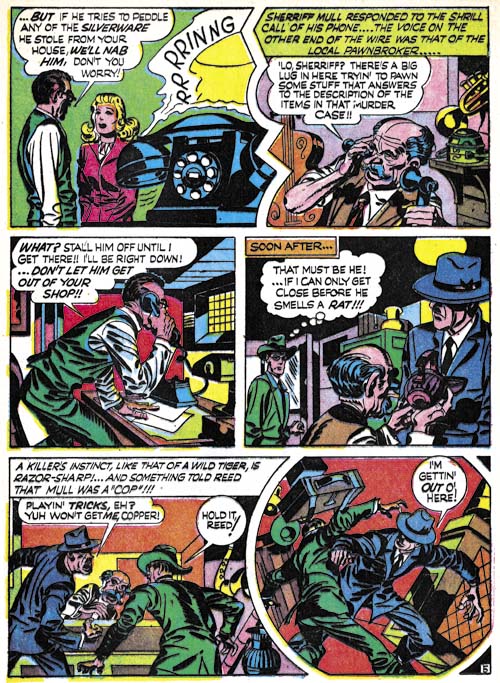
Headline #24 (May 1947) “Murder on a Wave Length” page 5, pencils by Jack Kirby
Furniture was coloring by the Hillman artist in a single brown or more rarely in two brown colors (usually CYM50, YC50M50, YC50M25 or YC25M25). The Prize artists often did furniture such as desk in a combination of two colors selecting from the same browns but also sometimes using some very unnatural colors as well.
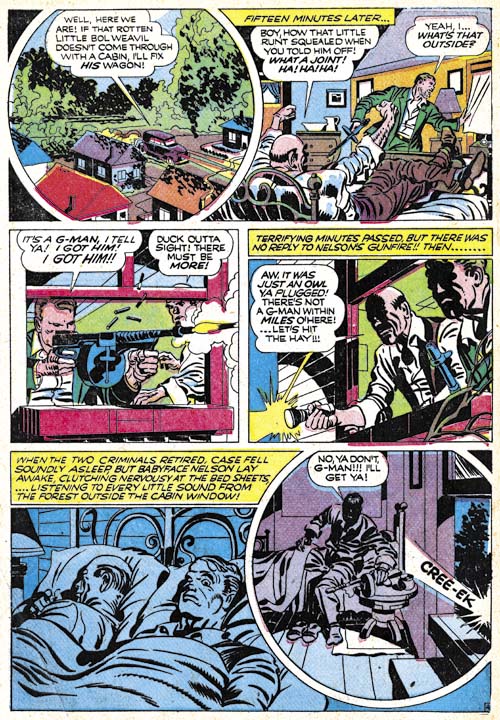
Headline #23 (March 1947) “The Last Bloody Days of Babyface Nelson” page 4, pencils by Jack Kirby
When the Hillman colorist did night scenes, such as in “Get Me the Golden Gun” (Real Clue Crime Stories v.2 n.6, August 1947 as shown in the first chapter), only the presence of the moon suggests that the story occurs in the dark otherwise the coloring is just like in the day scenes. The Prize colorist, however, did distinctive night scenes. Coloring for the night scenes is largely limited to blue colors (generally C, CM25, C and C50) or violets (C50M50 and C25M25).
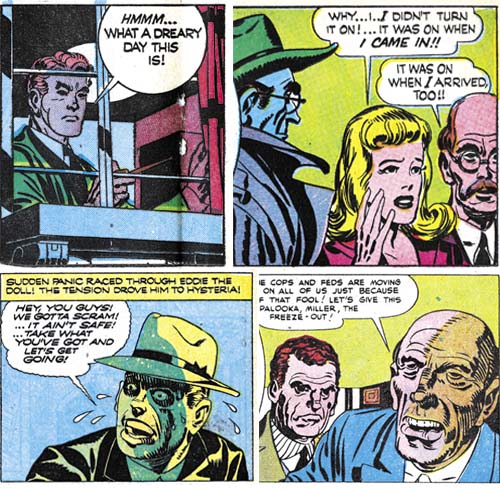
Headline #24 (May 1947) “A Phantom Pulls the Trigger” page 1
Headline #24 (May 1947) “Murder on a Wave Length” page 4
Headline #25 (July 1947) “Masquerade of Eddie the Doll” page 6
Headline #26 (September 1947) “The Strange Aftermath of the Kansas City Massacre” page 4 (all pencils by Jack Kirby)
Perhaps the most distinctive trait of the early Prize crime colorist was the occasional unusual coloring of people. The effect I am referring is not the blocking out of a figure in a single color (usually light violet, C25M25) that both the Hillman and the Prize colorists would sometimes do. The Prize colorist would go much further and use very unnatural colors. The Prize colorist did not do this very often but I have never seen the Hillman colorist do it.
The period I have been discussing in this and the previous chapter was from March to September 1947 during which time Simon and Kirby produced work for both Hillman and Prize. Undoubtedly because Prize offered a better financial deal, afterwards Joe and Jack stopped working for Hillman and Prize became their almost exclusive employer (they still were providing Boy Commandos for DC). I will discuss some of the coloring done in the Headline Comics and Justice Traps the Guilty in the next chapter.


